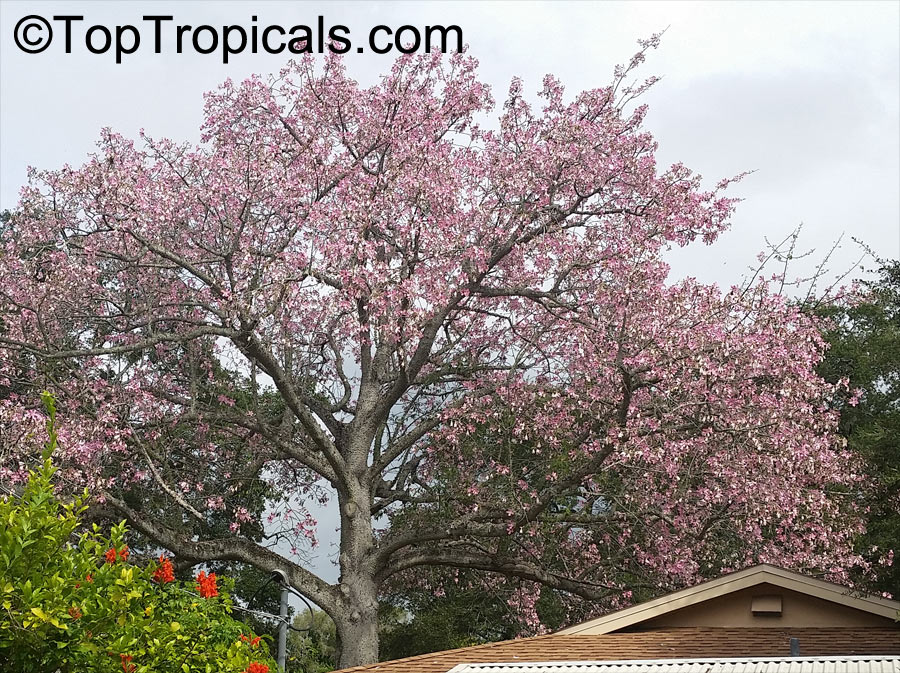Chorisia (ceiba) speciosa - Exotic Pink Silk Floss Tree
by Onika Amell, tropical plant expert
About the Author
 Onika Amell was born in farmer's family in Cape Town, South Africa, and always had a keen interest in gardening. She has been a globe-trotter for many years, traveling along with her husband, an engineer, and her life is worth a novel. In Cape Town she worked in groups "Soil for Life and Work for Love", teaching people how to grow their own food, improve their health, and protect the environment. Onika lived in Galilee, Israel, skydiving over 500 jumps and working on the fields planting, harvesting and caring for various crops (Lychee, Avocado, Bananas, etc), helping out in community gardens... In SE Asia, she taught English at business centers... Upon finally settling in SW Florida, she joined the ECHO Global Farms project on teaching farmers/families around the world about effective crop production... Now as a part of Top Tropicals Team, Onika is our plant expert and a columnist. Onika's biggest passions are plants and... of course – cats, who are her children! She has six of them: Itembi, Freddie Mercury, Donald Trump (he is the difficult one), Tigerlilly, Sweetie, and Jaxson.
Onika Amell was born in farmer's family in Cape Town, South Africa, and always had a keen interest in gardening. She has been a globe-trotter for many years, traveling along with her husband, an engineer, and her life is worth a novel. In Cape Town she worked in groups "Soil for Life and Work for Love", teaching people how to grow their own food, improve their health, and protect the environment. Onika lived in Galilee, Israel, skydiving over 500 jumps and working on the fields planting, harvesting and caring for various crops (Lychee, Avocado, Bananas, etc), helping out in community gardens... In SE Asia, she taught English at business centers... Upon finally settling in SW Florida, she joined the ECHO Global Farms project on teaching farmers/families around the world about effective crop production... Now as a part of Top Tropicals Team, Onika is our plant expert and a columnist. Onika's biggest passions are plants and... of course – cats, who are her children! She has six of them: Itembi, Freddie Mercury, Donald Trump (he is the difficult one), Tigerlilly, Sweetie, and Jaxson.
Chorisia (ceiba) speciosa - Exotic Pink Silk Floss Tree
When I stumbled upon my first Pink Silk Floss tree at the Naples Botanical Garden in Florida, it stopped me in my tracks. It was in full bloom and one of the most beautiful flowering trees I had ever laid my eyes upon. This tree has so much wow factor. Not only are the flowers of this native from the Amazon Rain Forest in South America spectacular, but the trunk, seeds and attractive, umbrella-like crown makes it exceptionally unique and interesting. This tree will stand out in any garden.
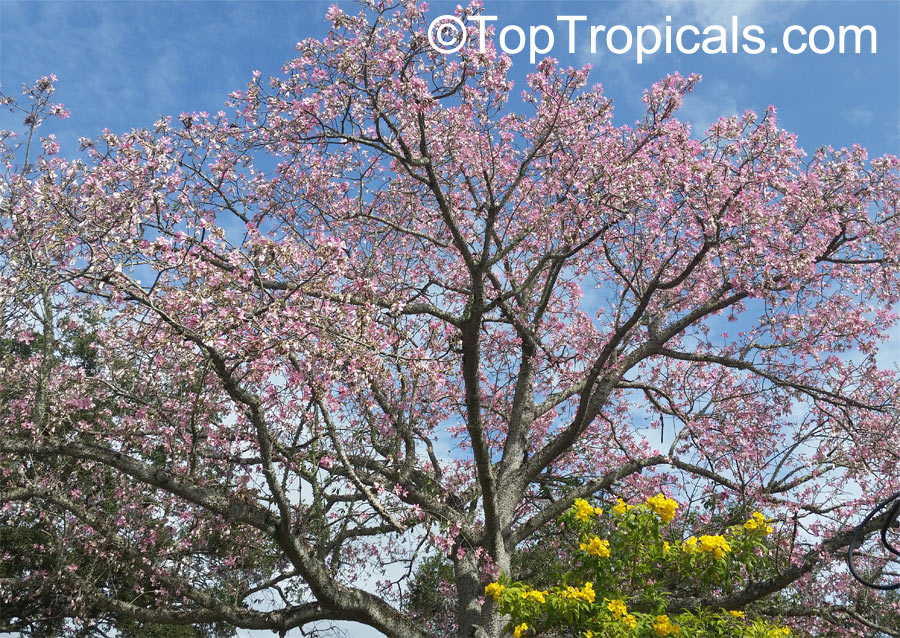
In Autumn (October to November) the entire canopy gets covered in tens of thousands of huge, breath taking blooms which somewhat resembles large hibiscus flowers.
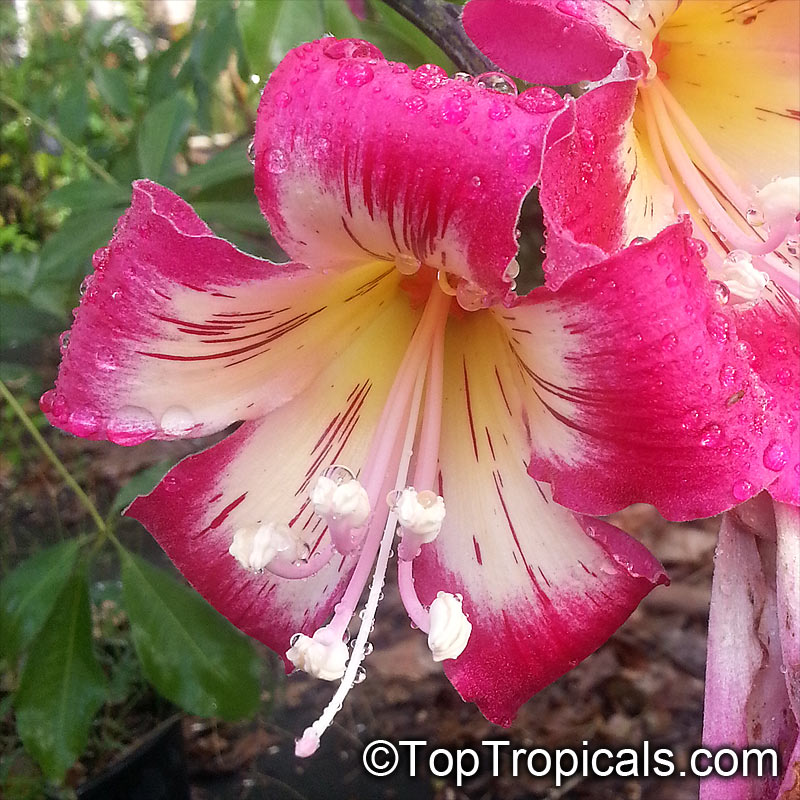
The flowers are then followed by pear shaped seed pods, dangling from the tree like brown, small sausages. Once these seed pods dry, they crack open to expose big balls of white cotton-like stuffing. Fluffy fibers called Kapok will catch the breeze, carrying the tiny seeds with them on their journey. This Kapok floss is exactly how this tree found its name and was used once to pad things like life jackets and pillows, as well as upholstery for many American automobiles. Thin strips of bark was also used to make rope.
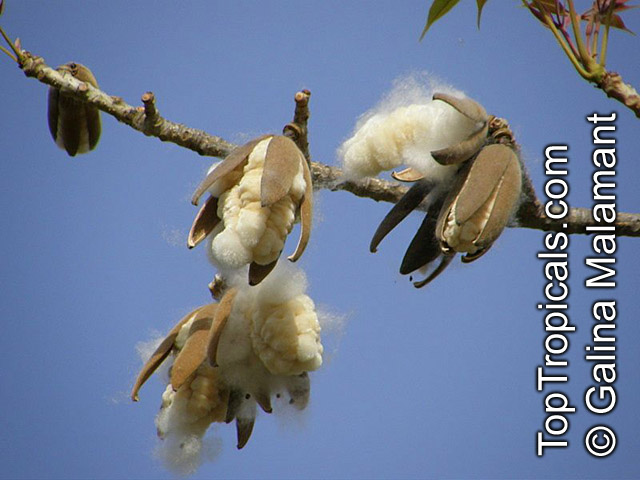
The marvel does not stop there. Even the trunk of this tree is pretty interesting. Thick and green, it takes on a slightly bulbous form as it matures. Sometimes the trunk gets covered in numerous, very large thorns giving it an almost prehistoric, armored look. Often times though, these thorns remain absent. So very exotic!
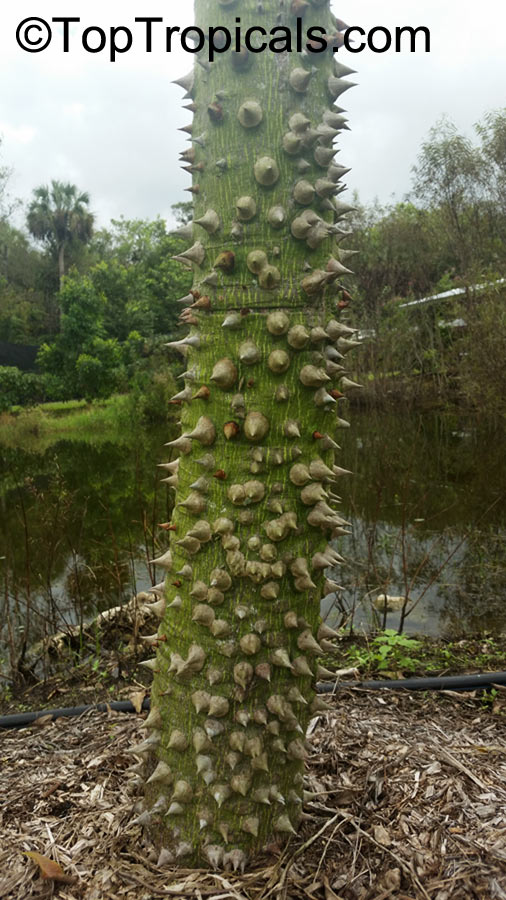
This is a relatively fast growing, deciduous tree that should be planted in full to part sun. It is happy in fertile, well drained and moist soil. Water regularly for the first year and then allow it to dry out between watering as it reaches more maturity.
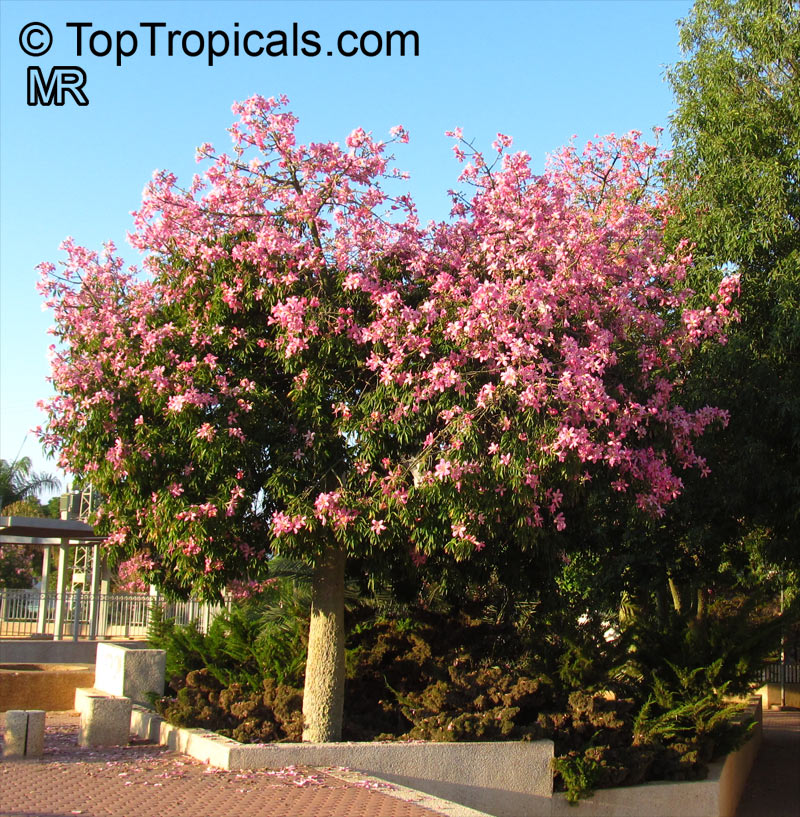
Silk Floss trees are quite drought tolerant once established. Reduce watering during the winter months. Mature trees can withstand temperatures to 20F for short periods.
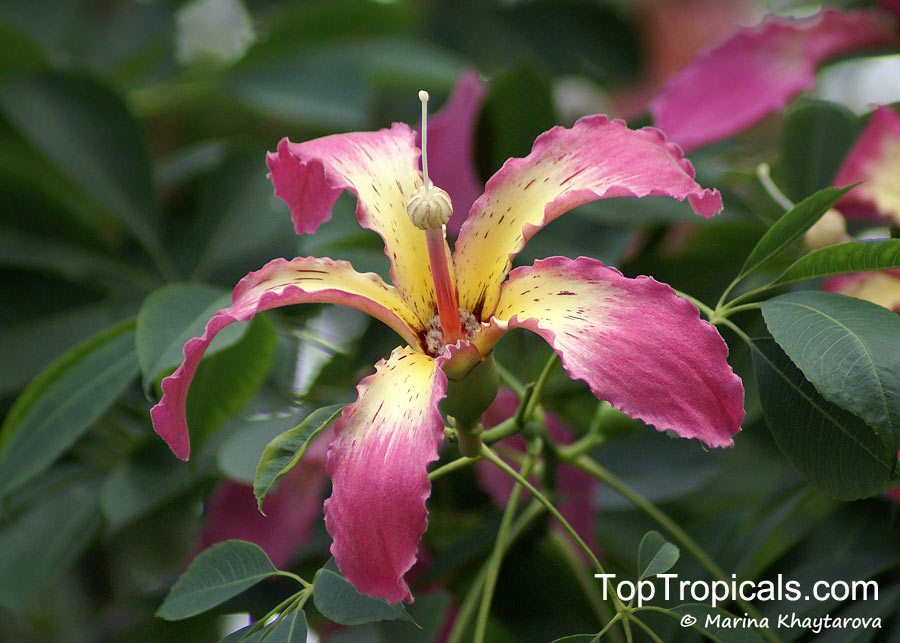
Keep it happy with a good fertilizer three times a year, during spring, summer and autumn.
We recommend:
SUNSHINE Megaflor - Bloom Nutrition Booster
Tropical Allure - Smart-Release Booster
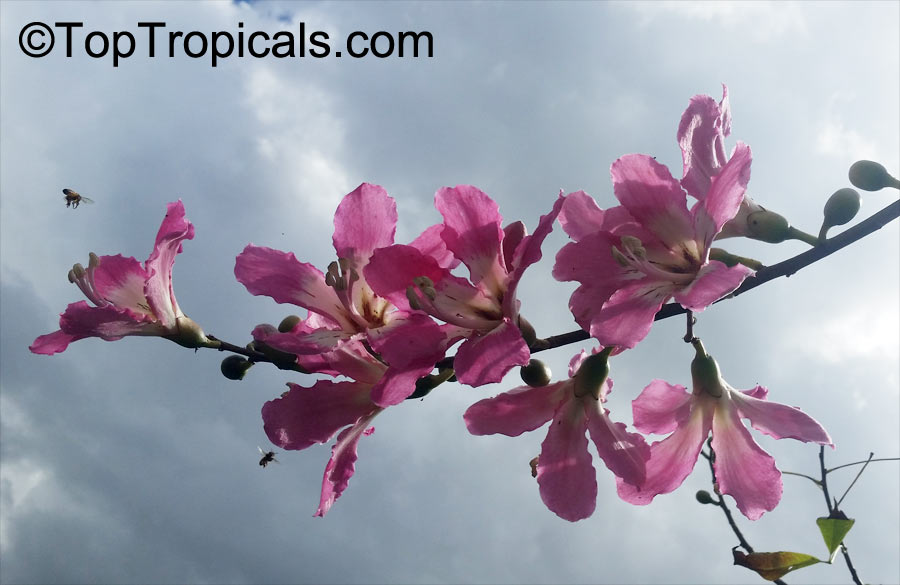
Keep the mature size in mind when planting this beauty. A Silk Floss can easily reach up to 50 feet in height with a 40 feet spread. Keep well away from building structures and power lines.
The most famous Pink Silk Floss tree in the United States lives on the grounds of the Hotel Bel Air in Los Angeles, California. This stately old lady is boasting a trunk of thirteen feet in diameter. At ninety years old, she is the Great Dame of them all and has been called the single most spectacular flowering tree in the United States.
Come and get yours!
